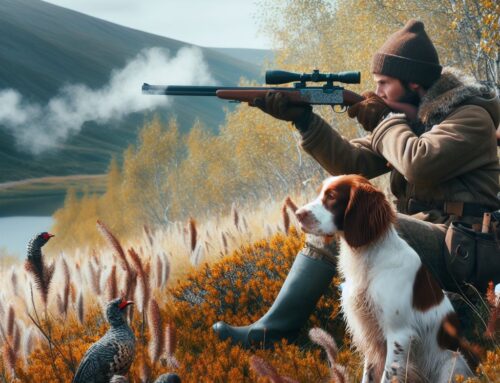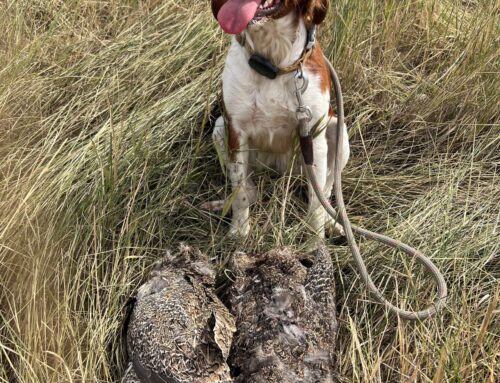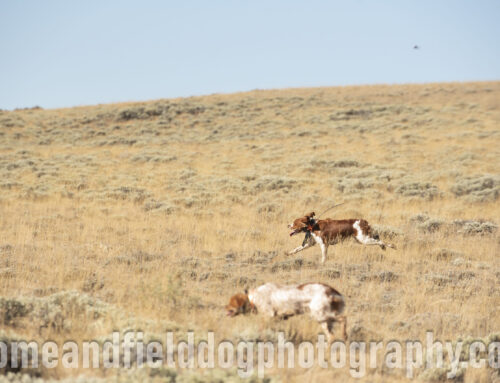Some people are ruthlessly committed to specific ammunition, or gauges or specific guns when it comes to hunting upland game birds.
I was asked the other day by someone what my favorite gun is of all the guns I have.
I replied that I couldn’t answer that question without more information. I asked favorite for what? Many of you might know the routine. Then I helped dial in the questions very specifically not only for what species of gamebird when we got to it, but in what hunting scenario. Pheasant for example. I asked well are we talking wild pheasants, liberated pheasants, pen raised birds stashed in a bush or a launcher, type of field we were hunting, how many people and dogs are with us? Is it early season or late season? What is the weather like? I will often carry different loads as well regardless of what gun I am carrying. Then of course there are guns that only come out in good weather, and guns specifically for wet nasty weather if I am ambitious enough to go out.
Each scenario to me is a different favorite gun. Now don’t get me wrong, I will try to make due with anything I have in my hands, I will prepare ahead of time for my hunts thinking carefully about gun selection, but more importantly ammunition selection, and choke adjustment. I will always have a back up gun available for someone who forgets or in the event of a problem with my primary gun in the field.
I also carry a few different loads based on what conditions may be that day, or to adapt if they turn out to be different than I expected. Especially if I am shooting an over and under or a side by side (Thanks Dez young for that!), I will always have a different choke tube in each barrel, and I may have different loads in each barrel. For example my top barrel which is what I usually fire first will generally have a wider choke and a lighter load since I am likely standing closer to the bird upon flush. My bottom barrel will have a tighter choke and a heavier faster load since it probably means I missed my first shot and the bird is now farther away. This is the single best reason to hunt with an over and under shotgun or a side by side. It allows this scenario over a pump or semiautomatic that just puts more rounds through the same choke. I have in the old days staggered my loads in my other guns in case I missed my first shot so I can follow up with a magnum load for example for my second shot. In trials however there my be specific rules on the shells allowed so then the only second shot option is a different choke from a different barrel, or a much more careful shot. The second best reason for side by sides or over and under shotguns is they really are safer in the field for everyone in the field. With the action open everyone can clearly see from a distance the firearm is safe and not ready to fire, or know that it is ready to fire. third reason is they are a gentleman’s gun. It elevates you to a different class of sportsman to use one. No longer can you down a whole covey on the rise, you have two shots. You are a better conservationist and better sportsman. You are focused on dog work, the outdoors; even on your own responsibility to practice and be proficient with shooting. It isn’t about bagging all the birds you can, it is about the whole experience. This doesn’t mean I am against a semiautomatic with an extension tube and perhaps 10 rounds loaded (My son Tyson for example with his Benelli before he learned how heavy that was in the field) but I am against taking every bird from any covey and not being responsible about making sure there are birds for the following year.
So when it comes to gun selection and ammunition selection we also have to consider the hunting scenario. I am hunting behind dogs that will find and point game. If we are doing well with our training, this means I should be flushing the bird under my feet regardless of species (other than Ruffed grouse and Dusky grouse that are most likely above us in the trees) so my first shot I should be quite close and I have to be in the habit of letting the bird get up and out ahead of me a bit before shooting so I don’t waste the game. Pellet size, velocity, and total pellet count matter. Now we have to consider pellet material as well. On some areas non toxic shot is required now for upland hunting as well. This means your shells are going to cost a lot more and you have so many options to comb through. This is a reason to spend the off season shooting trap and skeet and sporting clays. I always think of ammunition in terms of cost per trigger pull, not in box prices. If I am shooting some good non toxic shells for example I may be as much as $2 per trigger pull. I certainly don’t want to miss at all!
I also reload shotshell in every gauge but 16. I don’t yet have a reloader for 16 gauge but I don’t shoot it nearly as often as all my others. This allows me to make custom loads that are adapted to my shooting style when components are available (which is hardly ever in the last 10 years) or to make due with what components can be found and purchased. For example I have been able to continue shooting .410 bore, one of my very favorites for pen raised quail even though you can hardly find shells anywhere anymore. Also a box of .410 is often double the cost of 12 gauge shells even though they have a fraction of the powder and shot in them. This one area reloading saves you a ton of money, and again allows you to shoot them when they simply aren’t available.
But without talking politics too deeply ammunition has been very hard to find in the last ten years and sometimes you have to adapt and shoot whatever you can find.
Here are some personal recommendations from years of shooting and hunting. Sadly I am not sponsored by any of the companies I will mention.
When hunting truly wild pheasants, not liberated, not planted, not escaped. I am talking truly wild birds, cost per round matters but also being a humane hunter matters. If I am going to shoot a bird I want the bird to perish without suffering, and still preserve the meat. I never want to destroy a bird, and I don’t want to cripple a bird. Hunting with dogs helps tremendously with recovery of wounded game and is the responsible choice. If you don’t have a good bird dog, hunt alongside someone who does. For a truly wild pheasant I have never found factory round I like better than “Prairie Storm.” The combination of pellet shape, pellet material, buffering etc make this the most lethal round I have ever fired at a rooster. It flat works better than anything. But it has been impossible to find. I was turned on to a website that helps find specific ammunition I will share with you all, as the days of walking into your sporting goods store and finding what you are after are long gone. We simply must shop online now. The website www.ammoseek.com is a great tool finding specific loads. Fiochi golden pheasant is also nice, super pheasant by winchester, and federal ultra pheasant are decent factory loads. Shot size depends on what kind of pheasants and where and how early in the season. I generally move between 4-6 in shot size depending on how far out the birds are. Pen raised birds are different. I rarely shoot larger than 6 shot.
Chukar are another tough one. You need a really fast load because those birds get up and moving really fast! So velocity is often more important than payload but I generally want at least 1300 feet per second, and a shot size of 6 for wild chukar. I most often hunt them with 20 gauge because it is lighter to pack in the mountains where we hunt wild birds. Late season I may move to 12 gauge and a tighter choke because they are not holding for the dogs anymore and they are flushing farther away. Pen raised chukar I generally use a 28 gauge in size 6 shot or 20 gauge with perhaps even 7 shot.
Quail I only use 8 shot and also want a fast velocity. I almost always use 28 gauge, but on truly wild bird type hunts I may load some heavy loads in my twelve gauge to increase my chance of getting a wiley mearns quail.
Grouse I generally use 6-8 shot depending on what kind of grouse and what the cover is like. With grouse in our neck of the woods we generally are shooting through a lot of foliage. bigger shot sizes have more inertia to deliver fatal energy to the bird after going through a bunch of leaves. Ruffed grouse I usually use sub gauges, Dusky I generally use a 12. If it is going to be a mixed day hunt in an area I am likely to find both I will opt for a 12 with perhaps fast 8 shot shells at an ounce and a quarter.
So you can see a lot of though must go in to deciding what you are hunting, in what scenario to choose your gun, your choke, your shot size, your payload etc. Always think it through, always practice with the loads you will be shooting, and make adjustments along the way to keep your hunting ethical. And though most of us have many guns to choose from for the different scenarios, the old adage always rings true “Beware the man with only one gun” Back when I had only one shotgun it is all I ever shot, so I knew the gun very well and rarely missed anything. Of course my eyes were better then as well 😉







Leave A Comment